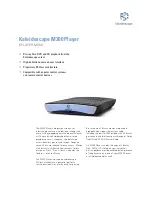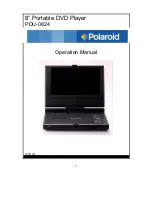
7
English
Composite Input TV Connection
Connect the COMPOSITE VIDEO
e
output to
the composite video input of your TV. Connect
the ANALOG AUDIO
=
outputs to the audio
inputs of your TV. A cable for these connections
is supplied.
If your TV has a single monaural audio input
instead of a pair of stereo inputs, you need to use
a “Y” cable adapter to connect the two output
channels of the RDV-1045 to the single input.
You can improve the sound quality of the
system by connecting the audio outputs to a
separate hi-fi audio system. (See the following
section.)
S-Video Input TV Connection
If your TV has an S-video input, you should
connect it to the S-VIDEO
e
output of
RDV-1045 using an S-video cable. This will
produce better picture quality.
NOTEs:
Do not connect an S-video cord
and a component video cord at the same
time. The may prevent proper playback
Connect the DVD player directly to a TV
or a monitor. Do not route through a video
cassette recorder (VCR). Otherwise picture
distortion may occur during playback. Con-
necting the DVD player to a VCR-built-in-TV
may also cause picture distortion.
Component Input TV Connection
If your TV has component video signal input
jacks you will get better video performance by
using the COMPONENT VIDEO
q
output
jacks of the RDV-1045. The required cable is
not provided. Be sure to connect the “Y” output
to the “Y” input, “P
B
” output to the “P
B
” input,
and the “P
R
” output to the “P
R
” input.
NOTES:
When using the Component Video
outputs do not connect an S-Video cable.
The component signal inputs on some TV’s
have BNC type connectors. (BNC connectors
are coaxial connectors that have keyed lock-
ing collars.) In such instances adapters or a
special cable may be needed.
When the Component Video outputs are
connected to an NTSC/PAL television you
may be able to use the Progressive Scan
mode of the RDV-1045 which produces a
picture with less flicker. See the P.SCAN sec-
tion of this manual.
Summary of Contents for RDV-1045
Page 25: ......








































